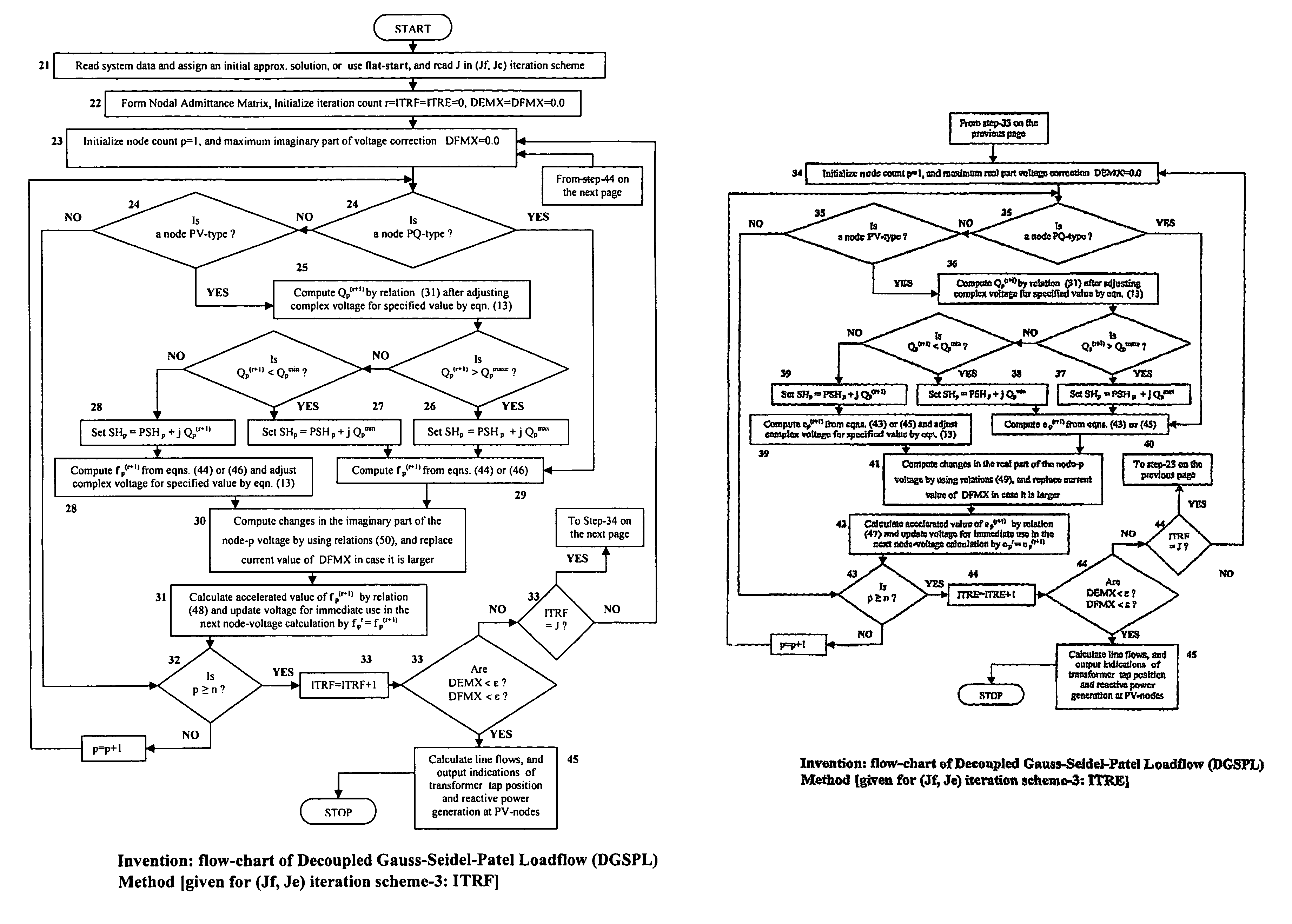System and method of loadflow calculation for electrical power system
a technology of electrical power system and loadflow computation, applied in the direction of electric digital data processing, position/direction control, instruments, etc., can solve the problems of over/under voltage, small and large disturbances in the health of the operating power network, and the change of the power flow pattern in the network, so as to improve convergence and efficiency
- Summary
- Abstract
- Description
- Claims
- Application Information
AI Technical Summary
Benefits of technology
Problems solved by technology
Method used
Image
Examples
Embodiment Construction
[0085]A loadflow computation is involved as a step in power flow control and / or voltage control in accordance with FIG. 3 or FIG. 4. A preferred embodiment of the present invention is described with reference to FIG. 5 as directed to achieving voltage control.
[0086]FIG. 5 is a simplified one-line diagram of an exemplary utility power network to which the present invention may be applied. The fundamentals of one-line diagrams are described in section 6.11 of the text ELEMENTS OF POWER SYSTEM ANALYSIS, forth edition, by William D. Stevenson, Jr., McGrow-Hill Company, 1982. In FIG. 5, each thick vertical line is a network node. The nodes are interconnected in a desired manner by transmission lines and transformers each having its impedance, which appears in the loadflow models. Two transformers in FIG. 5 are equipped with tap changers to control their turns ratios in order to control terminal voltage of node-1 and node-2 where large loads are connected.
[0087]Node-6 is a reference-node ...
PUM
 Login to View More
Login to View More Abstract
Description
Claims
Application Information
 Login to View More
Login to View More - R&D
- Intellectual Property
- Life Sciences
- Materials
- Tech Scout
- Unparalleled Data Quality
- Higher Quality Content
- 60% Fewer Hallucinations
Browse by: Latest US Patents, China's latest patents, Technical Efficacy Thesaurus, Application Domain, Technology Topic, Popular Technical Reports.
© 2025 PatSnap. All rights reserved.Legal|Privacy policy|Modern Slavery Act Transparency Statement|Sitemap|About US| Contact US: help@patsnap.com



